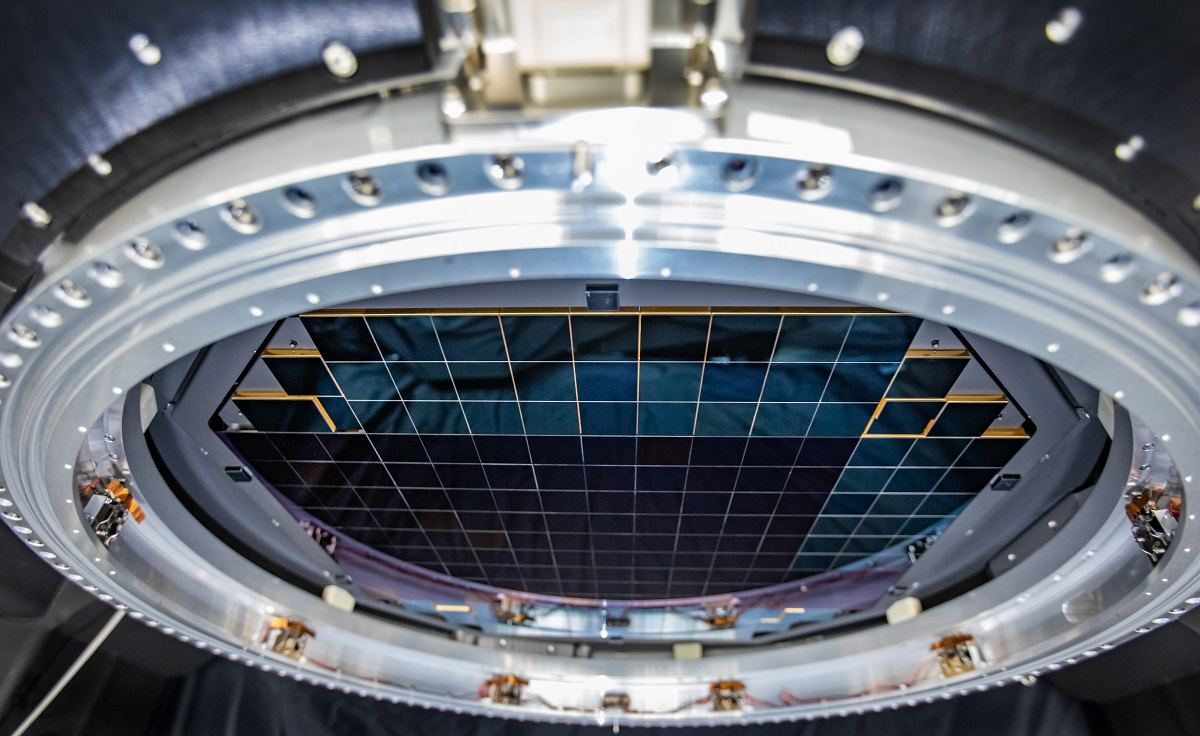The Vera C. Rubin Observatory has taken another step towards first light, projected for some time in 2022. Its enormous 3200 megapixel camera just took its first picture during lab testing at the SLAC National Accelerator Laboratory. The camera is the largest ever built, and its unprecedented power is the driving force behind the Observatory’s ten year Legacy Survey of Space and Time (LSST).
When paired with the 8.4 meter primary mirror, the camera is an impressive, data-producing monstrosity. Its focal plane contains 189 separate charge-coupled devices (CCDs) that each capture 16 megapixels. Each 3200 megapixel image would take 378 4K ultra-high-definition TV screens to display.
Each image is so huge, that a single one captures an area of sky equivalent to 40 full moons. The team behind the camera says that the image sensors are so powerful that it’ll be able to “see” objects that are 100 million times dimmer than the naked eye could see. A SLAC press release points out that at that level of sensitivity, you could see a candle from thousands of miles away.
“These unique features will enable the Rubin Observatory’s ambitious science program.”
Steven Ritz, project scientist, LSST Camera, University of California, Santa Cruz.
“This is a huge milestone for us,” said Vincent Riot, LSST Camera project manager from DOE’s Lawrence Livermore National Laboratory. “The focal plane will produce the images for the LSST, so it’s the capable and sensitive eye of the Rubin Observatory.”
SLAC’s Steven Kahn, director of the observatory, said in a press release, “This achievement is among the most significant of the entire Rubin Observatory Project. The completion of the LSST Camera focal plane and its successful tests is a huge victory by the camera team that will enable Rubin Observatory to deliver next-generation astronomical science.”
For ten years, the observatory will capture over 20 terabytes of data each night. By the end of its ten year survey, it will have produced 60 petabytes.
So much data will be produced, in fact, that there will be two dedicated 40 GB high speed fiber-optic data lines to handle it. All of that data will travel to the Archive Center in the US. There, it’ll be processed and stored, and made available to the community.
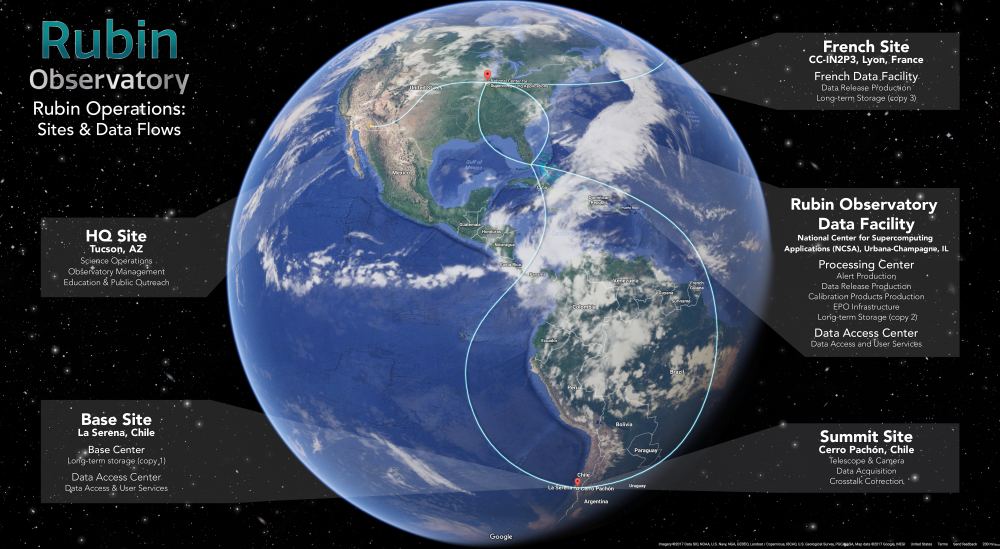
UsageTerms Creative Commons Attribution Share Alike 4.0 International License
All of this image gathering and processing will create the Rubin Observatory’s output: panoramic wide field images of the southern sky, one every few nights for 10 years. All those images will add up to one big, ten year long video of the night sky.
That will be the Rubin Observatory’s primary contribution to astronomy: the Legacy Survey of Space and Time (LSST). The LSST will be a catalog of some 20 billion galaxies, more galaxies than there are humans. It will find all kinds of transient objects, like asteroids zipping around our Solar System, as well as distant supernovae. It’ll help map out dark matter and dark energy, and also our own Milky Way.
The camera sensor system is made up of units called rafts. Each raft contains several sensors each, and there are two types of rafts. 21 rafts contain nine sensors each, and those 21 are responsible for acquiring the images. Then there are four specialty rafts. They contain three sensors each, and are responsible for focusing the camera, and synchronizing with the rotation of the Earth.
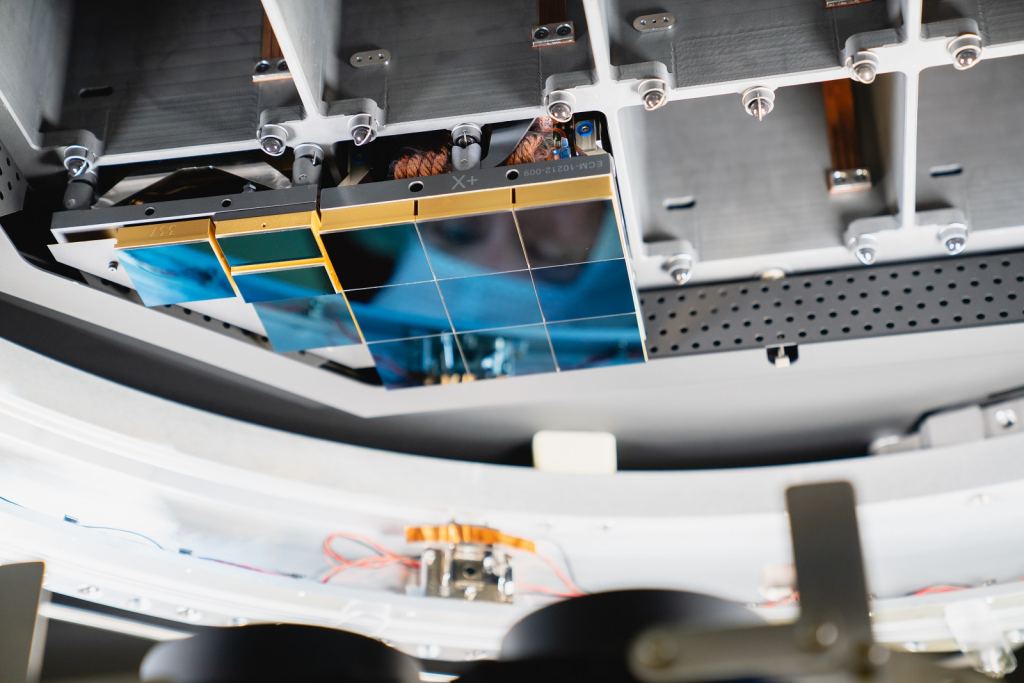
“These specifications are just astounding,” said Steven Ritz, project scientist for the LSST Camera at the University of California, Santa Cruz. “These unique features will enable the Rubin Observatory’s ambitious science program.”
“These data will improve our knowledge of how galaxies have evolved over time and will let us test our models of dark matter and dark energy more deeply and precisely than ever,” Ritz said. “The observatory will be a wonderful facility for a broad range of science – from detailed studies of our solar system to studies of faraway objects toward the edge of the visible universe.”
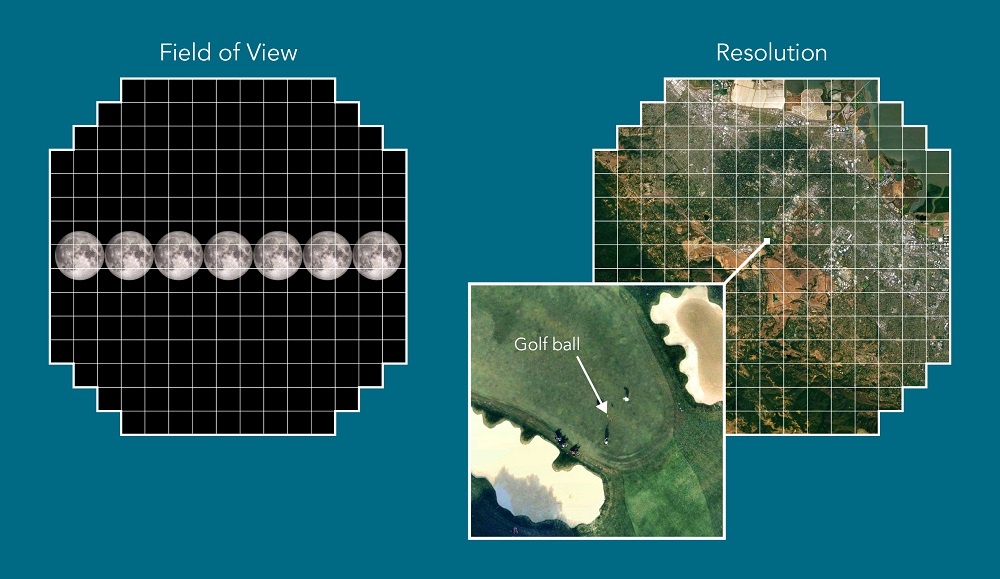
It’s taken the camera team several months to install the rafts onto the focal plane. The rafts are very expensive pieces of equipment. Each one can cost up to $3 million, and the tolerances in the installation are extremely tight. The space between each raft is less than five human hairs wide. The imaging sensors can also crack if they touch each other.
Hannah Pollek is a mechanical engineer at SLAC who worked on sensor integation. In a press release she said “The combination of high stakes and tight tolerances made this project very challenging. But with a versatile team we pretty much nailed it.”
To capture these first few images, the sensors were cooled to their operating temperature of -101 C (-150 F). Since the entire camera isn’t assembled yet, the team projected images onto the focal plane with a 150 micron pinhole. Objects used for the test images, were a head of Romanesco broccoli, the Flammarion engraving, a photo of Vera C. Rubin herself, a photo collage of LSST team members, and a photo collage of logos of LSST member institutions.
“Taking these images is a major accomplishment,” said SLAC’s Aaron Roodman, the scientist responsible for the assembly and testing of the LSST Camera. “With the tight specifications we really pushed the limits of what’s possible to take advantage of every square millimeter of the focal plane and maximize the science we can do with it.”
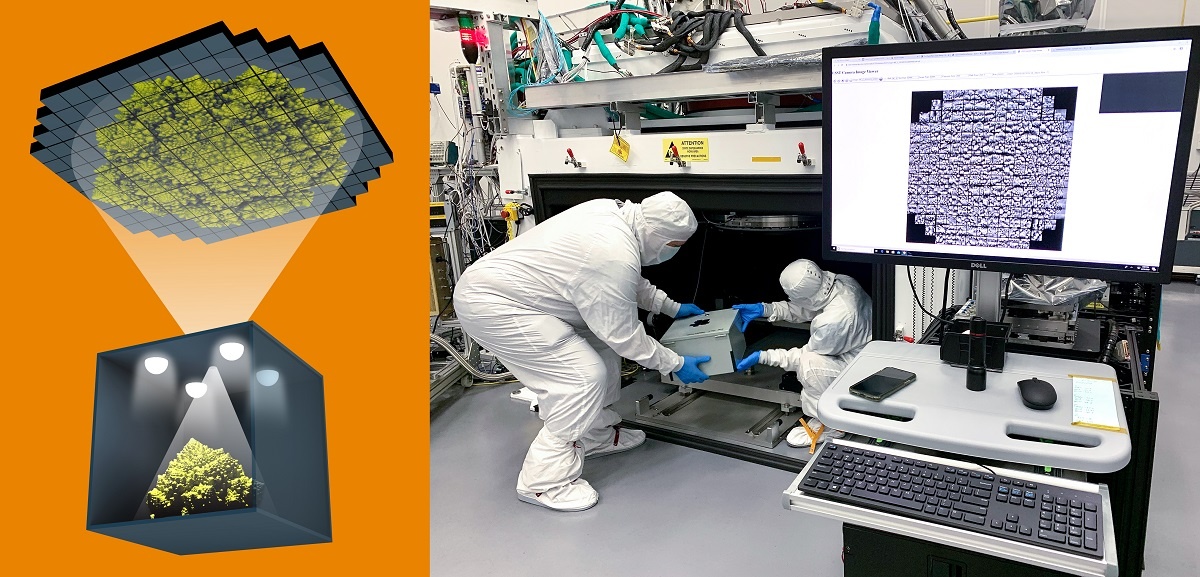
The next step is assembly of the entire camera. The focal plane and the cryostat will be inserted into the camera body, along with its three lenses. One of those lenses, at 1.57 meters (5.1 feet) in diameter, is thought to be the world’s largest high-performance optical lens. There’s also the shutter, and a filter exchange system. Altogether, the camera will be about the size of an SUV, and by 2021 it’ll be assemelbed and ready for final testing. After that, it’ll be shipped to Chile.
“Nearing completion of the camera is very exciting, and we’re proud of playing such a central role in building this key component of Rubin Observatory,” said JoAnne Hewett, SLAC’s chief research officer and associate lab director for fundamental physics. “It’s a milestone that brings us a big step closer to exploring fundamental questions about the universe in ways we haven’t been able to before.”
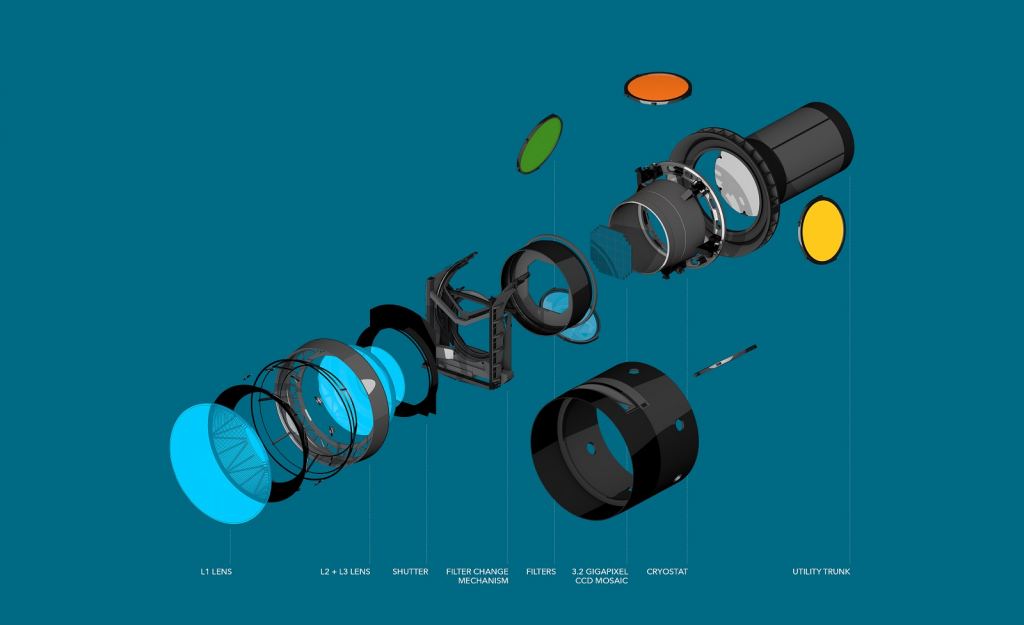
One of the things that makes the Vera C. Rubin Observatory so special is the fact that it images the same areas of the sky over and over in rapid succession. All of that activity is largely automated, too. This means that it’ll spot transient objects and will be able to alert other observatories to things like supernovae. That’ll allow powerful telescopes coming online soon, like the Extremely Large Telescope, to bring their power to bear on them in a way that the Rubin Observatory can’t.
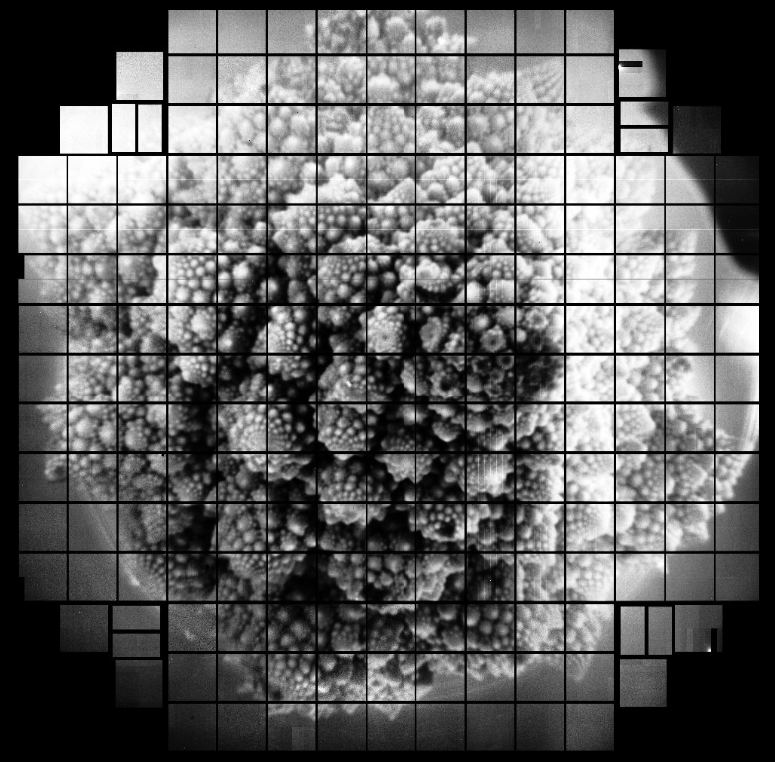
All of this exquisite image data will also be accessible to the rest of us. In 2007, Google announced their involvement with the project. While the LSST’s data will be available to researchers in a more raw form, Google wants to use their data expertise to make LSST data more accessible to the public. They’re hoping to provide digital coverage of things like supernovae, asteroids, and distant galaxies.
The Vera Rubin Observatory’s catch words are “wide, deep, and fast.” It’ll repeatedly survey the night sky with a wide field of view, with high-resolution depth, and it’ll do it quickly. There’s never been anything like it.
And the fact that anybody with an internet connection will be able to share in the discoveries and images means that the Rubin Observatory could inspire generations of future astronomers, the same way the Hubble Space Telescope has.

